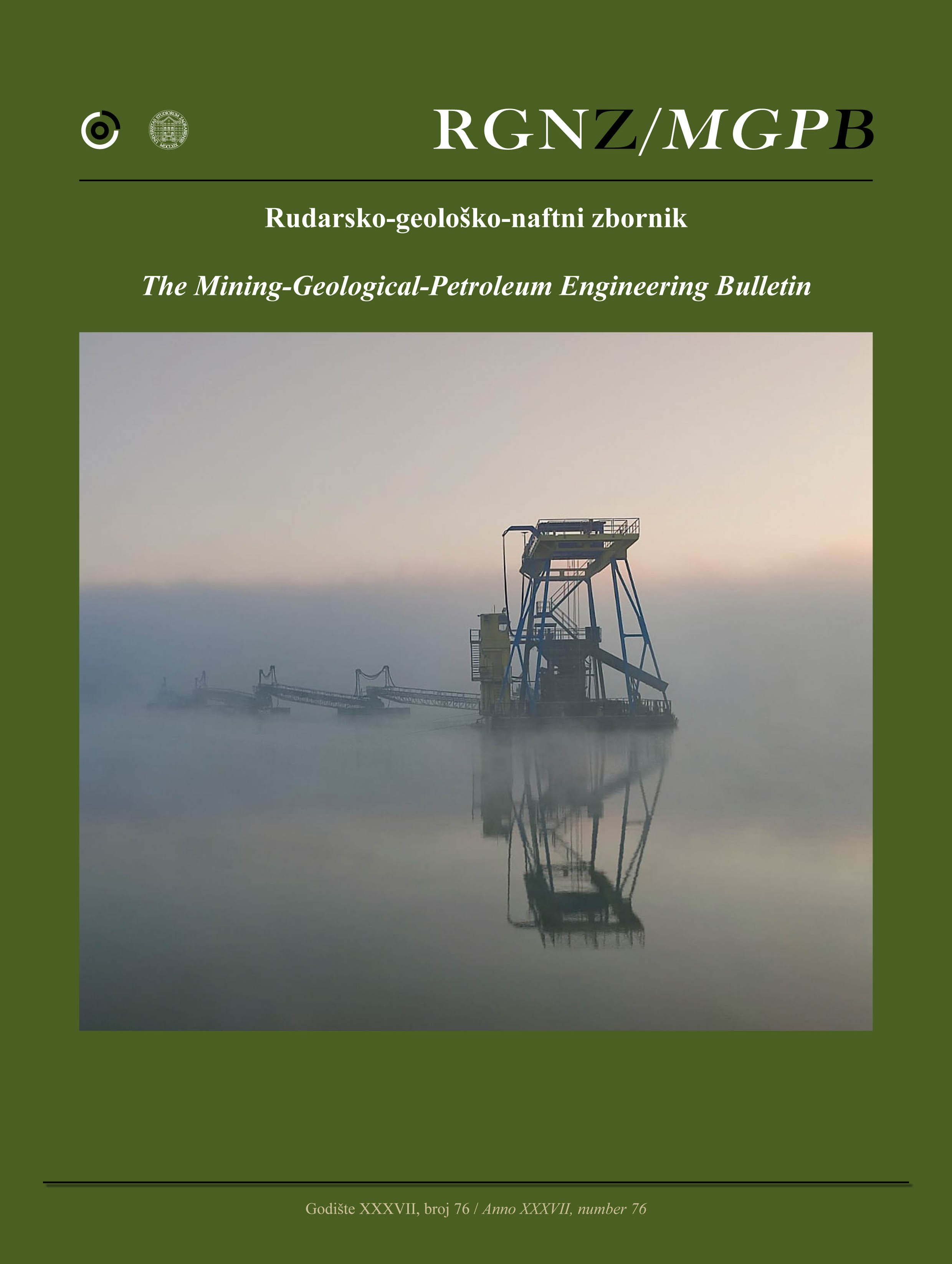Evaluating Liquefaction Susceptibility Through HVSR and MASW Methods: A Case Study in Mamuju, West Sulawesi, Indonesia
DOI:
https://doi.org/10.17794/rgn.2025.5.1Keywords:
liquefaction, HVSR, MASW, Seismic Vulnerability Index, shear wave velocity, Mamuju earthquakeAbstract
The 2021 Mamuju earthquake (Mw 6.2) highlighted the region's high vulnerability to liquefaction due to its proximity to active tectonic zones, as well as the presence of Holocene alluvial deposits, unconsolidated sedimentary formations, and water-saturated soils, all of which contribute to high susceptibility to seismic shaking. This research assesses the liquefaction potential of the Mamuju area using an integrated approach that combines the Horizontal-to-Vertical Spectral Ratio (HVSR) and Multichannel Analysis of Surface Waves (MASW) methods. This study investigates an inverse correlation between Vs30 and the seismic vulnerability index (Kg), where lower Vs30 values correspond to higher Kg values, indicating increased liquefaction susceptibility. The HVSR analysis shows that the dominant frequency (f₀) ranges from 0.4 to 11 Hz, while the amplification factor (A₀) varies between 1.1 and 11. The results indicate that coastal zones with thick alluvial deposits exhibit the lowest f₀ values (<2.5 Hz), which correlate with Vs30 < 175 m/s and Kg > 10, suggesting a higher likelihood of liquefaction. Conversely, areas underlain by the Mamuju Formation and Adang Volcanics, characterized by higher Vs30 (>175 m/s), f₀ (>10 Hz), and Kg (<10), show lower susceptibility. These findings contribute to developing a detailed microzonation map for liquefaction risk, which is essential for improved urban planning and disaster mitigation in Mamuju. This study demonstrates that integrating HVSR and MASW methods is an effective approach to characterizing soil properties and enhancing liquefaction risk assessment in seismically active regions.
Downloads
Published
Issue
Section
License
Copyright (c) 2025 Andri Moh Wahyu Laode, Muh. Altin Massinai, Muhammad Fawzy Ismullah Massinai, Erfan Syamsuddin

This work is licensed under a Creative Commons Attribution 4.0 International License.
Creative Commons-BY
Authors who publish with this journal agree to the following terms:
In agreeing this form, you certify that:
- You read the ethical codex of the RGN zbornik available at journal web.
- You submitted work is your original work, and has not previously been published and does not include any form of plagiarism.
- You own copyright in the submitted work, and are therefore permitted to assign the licence to publish to RGN zbornik.
- Your submitted work contains no violation of any existing copyright or other third party right or any material of an obscene, libellous or otherwise unlawful nature.
- You have obtained permission for and acknowledged the source of any illustrations, diagrams or other material included in the work of which you are not the copyright owner.
- You have taken due care to ensure the accuracy of the work, and that, to the best of your knowledge, there are no false statements made within it.
- All co-authors of this submitted work are aware of, and in agreement with, the terms of this licence and that the submitted manuscript has been approved by these authors.
Publication licence
You retain copyright in your submitted work, according to journal license policy (CC-BY). By signing this form you agree that RGN zbornik may publish it under the publication licence. In summary the licence allows the following:
Anyone is free:
- To copy, distribute, display, and perform the work.
- To make derivative works.
Under the following conditions:
- The original author must always be given credit.
- The work may not be used for commercial purposes.
- If the work is altered, transformed, or built upon, the resulting work may only be distributed under a licence identical to this one.
Exceptions to the licence
In addition to publishing the work printed under the above licence, RGN zbornik will also enable the work to be visible online.
The journal editorial can change the licence rules anytime but it cannot retroactively restrict author(s) rights.


